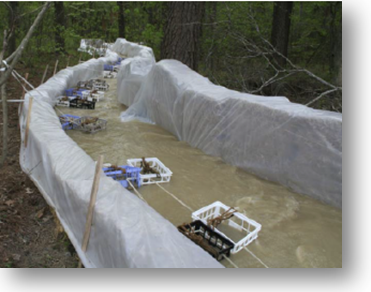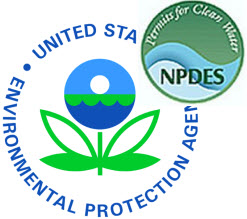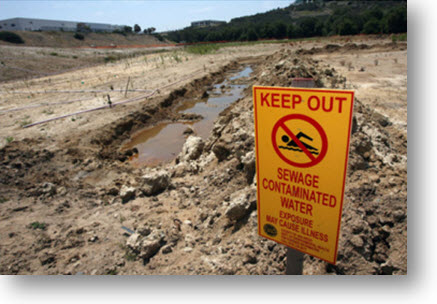NPDES PERMITS FOR LOGGING ROADS
Stormwater Discharges from Logging Roads Require Clean Water Act Permits, Ninth Circuit Holds.
 The Ninth Circuit this week affirmed an earlier decision that will effectively require many timberland owners and logging companies to obtain permits for stormwater runoff from logging roads in the western U.S. The case, Northwest Environmental Defense Center (NEDC) v. Brown, involved two Oregon logging roads where stormwater runoff is collected in systems of ditches, channels, and culverts, and then discharged into adjacent rivers. |
We ALL Live Downstream, So Let's Work Together!"
Click Here for
|
WHAT IS ANIONIC POLYACRYLAMIDE
and APPLIED POLYMER SYSTEMS, INC.
 As the USEPA slams the lid down on mud filled discharges from construction sites, now more than ever land developers must focus on erosion control and stormwater treatment with an enviornmentally safe product called anionic polyacrylamide. As the USEPA slams the lid down on mud filled discharges from construction sites, now more than ever land developers must focus on erosion control and stormwater treatment with an enviornmentally safe product called anionic polyacrylamide.
APS 700 Series Floc Log is a group of soil specific tailored blocks that contains blends of water treatment components and polyacrylamide co-polymer for water clarification and erosion control. It reduces and prevents erosion of fine particles and colloidal clays from water. There are more than 60 types of Floc Logs designed for varying soil and water conditions. Test your soils before you choose which type to use. APS has a great website with a ton of valuable information.
MORE |
 The NEW PROPOSED NPDES GENERAL PERMIT for Construction The NEW PROPOSED NPDES GENERAL PERMIT for Construction
May 18, 2011 WASHINGTON - The U.S. Environmental Protection Agency (EPA) is releasing for public comment a draft permit that will help improve our nation's waterways by regulating the discharge of stormwater from construction sites. Stormwater discharges during construction activities can contain sediment and pollutants that harm aquatic ecosystems, increase drinking water treatment costs and pollute waters that people use for fishing, swimming and other recreational activities.
The proposed Construction General Permit (CGP) includes a number of enhanced protections, including enhanced provisions to protect impaired and sensitive waters.
MORE |
|
Keeping Raw Sewage and Contaminated Stormwater Out of Our Nation's Waters National Enforcement Initiative (FY 2011 - 2013)

To reduce water impairments from stormwater, EPA developed the Clean Water Act: Stormwater Strategy Summary of 2008 - 2010 (PDF). The EPA focused on Clean Water Act violations from stormwater runoff from the following industries: homebuilding construction, big box store construction, and ready mix concrete, sand, and gravel operations.
For FY2011-2013, because of widespread support for continuing EPA's work on reducing pollution, the EPA is going after discharges of raw sewage and contaminated stormwater. The FY2011-2013 plan is to focus on reducing discharges from combined sewer overflows ("CSOs"), sanitary sewer overflows ("SSOs"), and municipal separate storm sewer systems ("MS4s") by requiring cities' to implement timely, affordable solutions to these problems, including increased use of green infrastructure and other innovative approaches.
MORE |